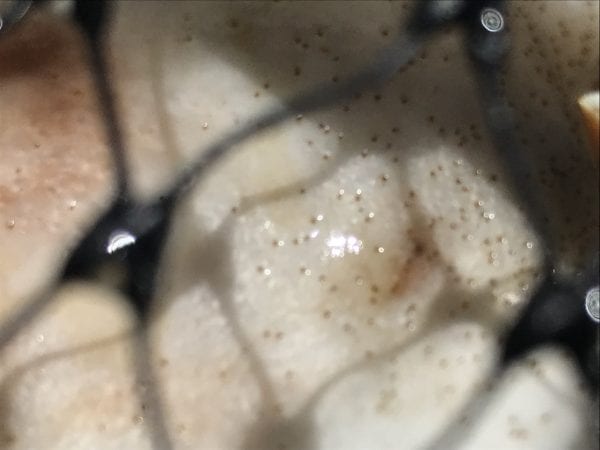

Read our 7 Essential Tips for Successful Oyster Seed Growth Blog to learn how to raise healthy meaty oysters from your seed.Philippine Council for Agriculture, Aquatic and Natural Resources Research and Development. Give us a call to discuss ordering seed and for advice to chat about bagging up your seed.

Available equipment, manpower and site conditions will all play their part in these decisions. For instance some growers choose to move their seed from a 4mm to a 6mm and then on to a 9mm bag whereas other growers skip that middle step entirely. It is important to remember that these are just general rules and each grower will have to find the method that works best on their site. Oyster Bag Mesh Sizes (suggested) MESH SIZE For example if you have fewer in a bag they will roll around more and it can happen that with the frills knocked off a G10 can ‘size down’ to a G9 so keeping on top of the mesh size you use is important.

Higher densities present a potential risk if you have diseases or red tides coming into a bay: the higher the density, the faster the mortality could spread in a bag (not always the case, but the majority of time).We would recommend trying to grow seed at different levels on the shore: lower down and you should achieve faster growth mid-tide and higher level on the shore will produce a hardier oyster.If your site is rich in nutrients, 120 oysters per bag is the recommended density for the highest meat content.Ī few considerations to bear in mind when bagging up your seed: Once oysters are big enough to sit on a bigger mesh, you can cut them down to 4 to 600 per bag, cutting down for the final growing stage to 150 oysters per bag (some go as low as 120 per bag). In English we use G for grade and the number represents the size of the oyster seed in mm. In France oyster seed is described using T for ‘taille’ or ‘size’ (so T6, T8 etc). That nice round shape should follow through to the adult oyster as long as good husbandry is maintained throughout the growing cycle. The biggest advantage of this is that you end up with a hardier oyster which should be more resistant. You may notice that at 4000 the growth appears to be faster: this is because the oysters have less space to roll around with tide action and therefore the frill (new growth) is not being knocked off.Īt a lower seed density, with the frill being broken off more regularly, you should see a difference in the quality of the shape of the seed, producing a rounder oyster with a deeper cup. If you are short of bags, you could consider a maximum first stage growing density of 4000/p bag. It is advisable not to leave seed too high on the shore when you get them first so that they get ample water coverage. It is important to get them back into the water as quickly as possible but you can leave them like this for up to 10 days which should allow you the time to redistribute them. When the seed first arrives from the hatcheries you can put them into the bags at densities of up to 5000 units initially. It’s a tricky question to give a straight answer to as there is so much variation between growing sites but a few general principals can be applied. A question we are often asked is what is the optimum bag density to on-grow gigas oyster seed.


 0 kommentar(er)
0 kommentar(er)
